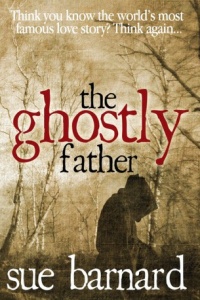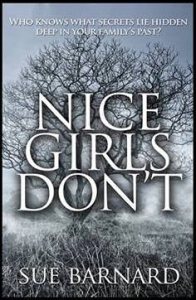I’m delighted to welcome my friend and fellow Crooked Cat author, Sue Barnard, to the chaise longue this week. Not only is Sue an author in her own right, but she’s also an editor. More precisely, she is my editor. And a cracking job she did, too, of The House at Zaronza. She saved me from many a howler and smartened up my prose no end.
Sue’s going to tell us about the editor’s role: something we authors tend to take rather for granted. So it’s good to redress the balance. Take it away, Sue.
Being a writer has often been compared to having homework every night for the rest of your life. That being the case, then being an editor can perhaps be compared to having to mark that homework.
It’s almost two years since I first started working as an editor for Crooked Cat Publishing, shortly after I’d completed an online course in Editing and Rewriting. I’d originally signed up for the course with a view to being able to cast a more critical eye over my own work, but I came away from it with two further thoughts in mind. The first was a burning desire to channel the interminable rantings of my Inner Pedant into a force for good. The second was the realisation that if I couldn’t make it as a writer myself, then at least I might be of some small use to those who could.
Since then, I’ve edited books in several different genres (historical, contemporary, thriller, romance, fantasy, YA), and I’ve been asked quite a few times: What exactly does an editor do?
In short, the editor is the author’s right-hand man (or in my case woman) who works closely with the author to produce a pristine manuscript which will, in turn, become a published work. One of the biggest problems with being a writer is the danger of becoming so involved with one’s own work that one loses all sense of objectivity. (Take this from one who knows. Been there, done that, spilled coffee all down the T-shirt, and then again all down the clean one I put on in its place…).
This is the point at which the writer needs an extra pair of eyes. The editor, who is in the privileged position of being the first person to see the manuscript in the capacity of the reader, is that extra pair of eyes.
An editor is much more than just a proofreader. True, an editor does need to keep an eagle eye open for typos, spelling mistakes, punctuation slips and grammar gaffes – but the editor also needs to be on the lookout for other things that don’t necessarily fall within the proofreader’s remit. These might include:
- Continuity errors. For example, an object which is yellow in one scene inexplicably becomes blue in another. Or a character previously seen in one location suddenly appears somewhere else with no plausible explanation.
- Factual errors. A large flock of blackbirds is seen happily feeding on a lawn. Blackbirds are territorial, so this would never happen in real life.
- Incorrect local references. A story set in Portugal would not have the natives speaking Spanish.
- Inconsistencies of character. It’s very unlikely that a confirmed teetotaller would accept a large glass of whisky.
- Loose ends left dangling. If an object is lost, either it needs to be found, or a convincing reason must be given for its failure to reappear.
- Dangling modifiers – phrases where the word order has a direct bearing on the meaning. Perhaps the most famous example of this is the old chestnut I know a man with a wooden leg named Smith – to which the standard response is What’s the name of his other leg?
- Possible issues of copyright when quoting from other sources.
- Ensuring that the presentation of the manuscript complies with the publisher’s house style.
- Passages where some details might need more clarification. This happens when an idea has formed in the author’s head, but has never actually made it on to the page. And it is something which happens surprisingly often!
- Sentences or paragraphs which need to be split or reformatted because they’ve come out too long or complicated. Like I’ve had to do with this one, in fact.
One of the editor’s other tasks is to make suggestions for improvement to the text, such as tightening up dialogue so that it doesn’t sound stilted, or trimming superfluous words or phrases (such as repeated use of “he said/she said”), or sometimes changing the structure of sentences so that they read more easily and clearly.
This is achieved by judicious use of the “Track changes” feature in MS Word. This wonderful tool is the e-quivalent of the teacher’s red pen. Changes suggested by the editor appear on the manuscript highlighted in red. The manuscript is then returned to the author, who has the choice of accepting or rejecting those changes. The author then might suggest more changes (which show up on the manuscript in blue), and returns the document to the editor. Rinse and repeat as necessary. When both author and editor are completely happy with the result, the final (squeaky-clean) manuscript is then returned to the publisher.
After that, a pre-publication proof is sent to the author for checking. This final check is very important, as typos or formatting errors can still creep in, even at this late stage. And I’m afraid it is not unknown for editors to get things wrong. One particularly unfortunate victim of an editorial blunder was none other than JK Rowling. The first print-run of Harry Potter and the Goblet of Fire contained a glaring (and baffling) continuity error which did not appear in Rowling’s original manuscript. The mistake (which was corrected in later editions of the book) was introduced by one of her editors.
Come to think of it, editing is, in many ways, a bit like housework. Nobody ever notices it unless it’s done badly – or not done at all (cough-Fifty Shades-cough). But it’s a fascinating and very worthwhile profession – and it also means I’m never short of good stuff to read!
About Sue Barnard
As well as being a member of Crooked Cat’s editorial team, Sue is a published and award-winning poet, and the author of two novels: The Ghostly Father (which was nominated for the 2014 Guardian First Book Award) and Nice Girls Don’t. Both are available in paperback and e-book form. Her third novel is due out this summer.


You can follow Sue here:
Copyright © Sue Barnard, Vanessa Couchman 2015. All rights reserved.

She’s my editor!
LikeLike
Only the best for the best! 🙂
LikeLike
*blushes*
LikeLike
Reblogged this on Writing Wings and commented:
Fascinating and insightful interview with Sue Barnard, the editor that I’ve just used for “Storms Compass”.
LikeLike
Thank you Roland! 🙂
LikeLike
Thanks for reblogging, Roland.
LikeLike
Well explained! Thank you, Sue and Vanessa.
LikeLike
🙂
LikeLike
All down to Sue.
LikeLike